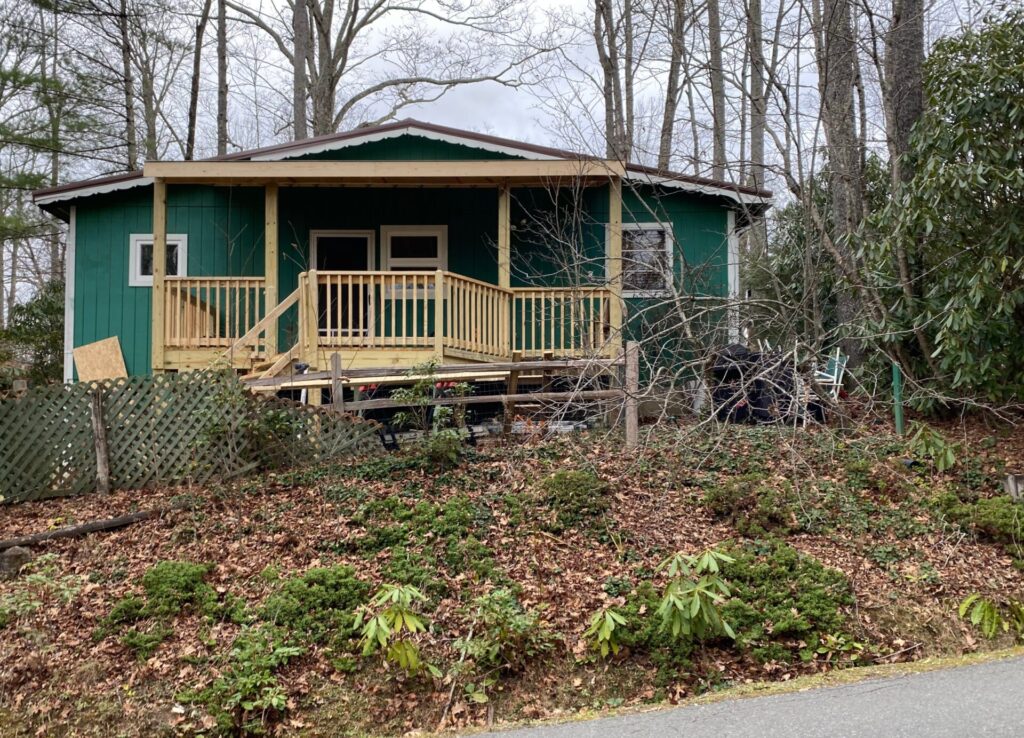How a Newbie Can Make a Difference
By Julie Roberts
The focus of this article is the overall process of how I purchased a home sight-unseen and transformed an ugly front yard that was overwhelmed with 15-foot tall Rhododendrons, a back garden with soil retention issues, and plenty of weeds around the property.
After we cleared the land and put in our native plants, we applied for and received approval for our gardens to be officially certified as native plant habitats with the North Carolina Native Plant Society. Thanks to a few other people including my husband, we have all been busy this past year.
We re-graded the front yard and saved some of the Mountain Laurel and Rhododendrons that came with the property because they’re great for birds to hide in and make nests. We made a 12- by 12-foot garden area for native plants, originally planting them in rows and quickly moving the plants into a more natural use of the 12- by 12-foot space.
In the backyard is actually a steep path naturally sloped to the main road at the back of the property. Renovations included saving a beautiful elderberry bush and an heirloom apple tree, replacing a cultivated Azalea with a native Azalea, removing seven railroad ties strewn across the hill, adding an accessible walkway to the road, and digging up and discarding unwanted plants and trash that we then replaced with 50 native plants on the new mostly cleared back slope.
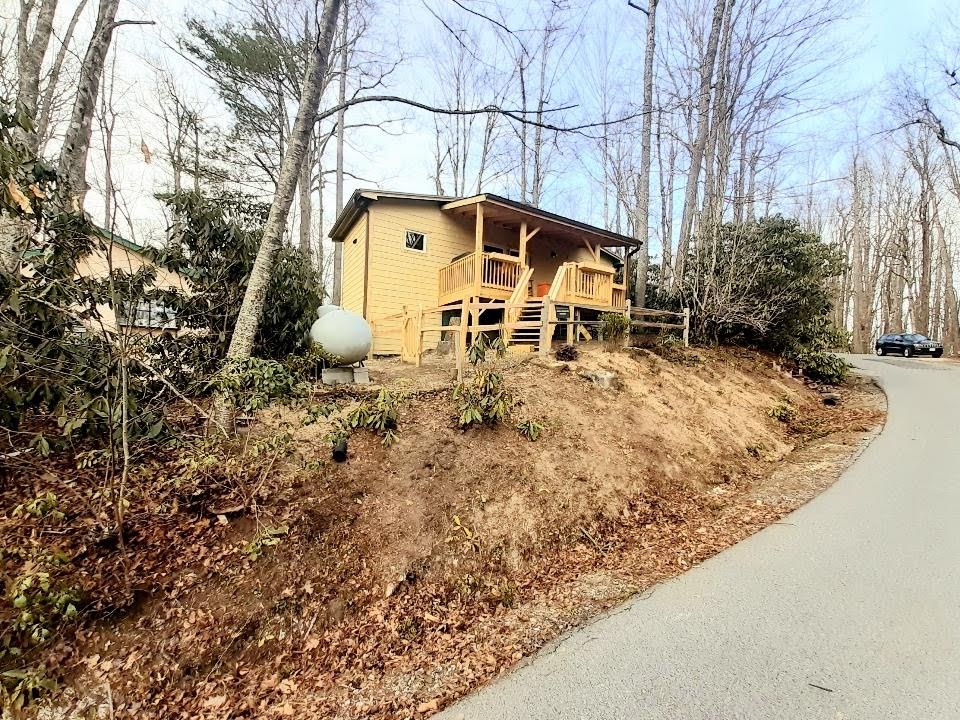
Today our yards contain two native plant demonstration gardens, one as a front yard garden and the other to better manage a slope. Now we have only native plants of varying maturity. The sloped front yard is filled with more manageable Rhododendrons and other native plants. We will be using our plant identification apps to identify new plants as they emerge from their dormancy and keep and retain them accordingly.
Like many new homeowners or for those of us who’ve decided we want to plant more native plants, I had always thought, “it would just take too long and maybe I shouldn’t bother.” But I did “bother.” And today it is my hope that other new homeowners can see how native plants can be sources for food, as medicinal plants, and to feed the local animals and birds. Some local animals are deterred from the garden but in general, if they are interested in something, they will all dig deeply in anyone’s garden to get bulbs, soils, plant debris, and insects for food and other purposes. etc. All the plants we used were sourced from Carolina Native Nursery in Burnsville. One special plant is the Threadleaf Coreopsis, Coreopsis verticillata ‘Zagreb’ planted as a memorial to a special friend, Jasminka Saric Petrish.
A year before Covid-19, reeling from my husband’s serious health issues, we relocated in 2020 from the New York area to my husband’s homeplace in the Mitchell/Avery County area. From there we quickly re-pivoted and moved to where we live now, beautiful Land Harbor in the Blue Ridge Mountains of Linville. It’s about 20 miles as the crow flies southwest of Blowing Rock. We’re settling in and enjoying this family holiday playground and retirement community of homeowners and vacation and e-stay renters. And we have been busy.
Even though I have been renovating yards since 1984, I had only minimal experience removing invasive gardens, especially English Ivy and climbing vines. I am no expert and I consider myself a long-term newbie.
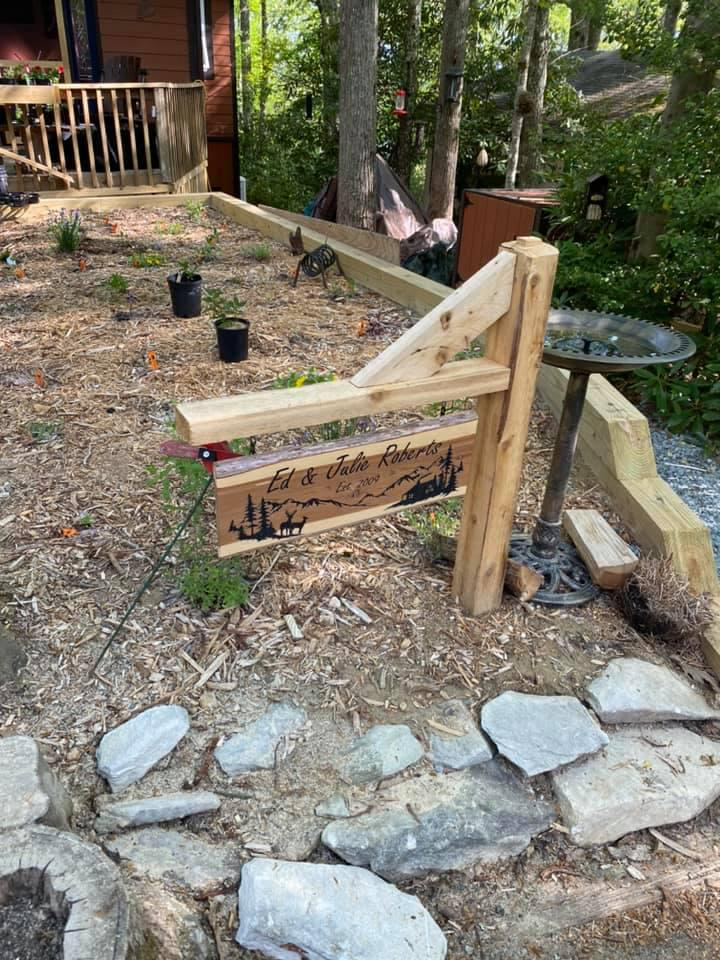
Julie Roberts
An inventory of how our house sits on the land motivated me to renovate the house, put in front and back porches, and find native plants to replace all the invasive plants we’d inherited when we bought the property, all while living there our first year.
We are in a virtual rain forest and numerous microclimates exist within Land Harbor and the Grandfather Mountain region alone. I assessed our small area in front, the one that used to be filled with 12 enormous Rhododendrons. I wanted to turn that area into two North Carolina native plant demonstration gardens. We purchased 50 native plants from Carolina Native Nursery. One special plant is the Threadleaf Coreopsis, Coreopsis verticillata ‘Zagreb’ planted as a memorial to a special friend, Jasminka Saric Petrish.
We also had an ugly steep slope that took up our backyard. When we bought the place, I noticed that the previous owners, in an effort to help stabilize the ground from the relatively common flooding rains, had added English Ivy that had become mixed with weeds. Knowing how invasive English Ivy is, I decided to replace it with native Azaleas and flowers as well as a wide variety of other native plants that I had seen in more natural areas of our community’s multiple neighborhoods and in native plant websites.
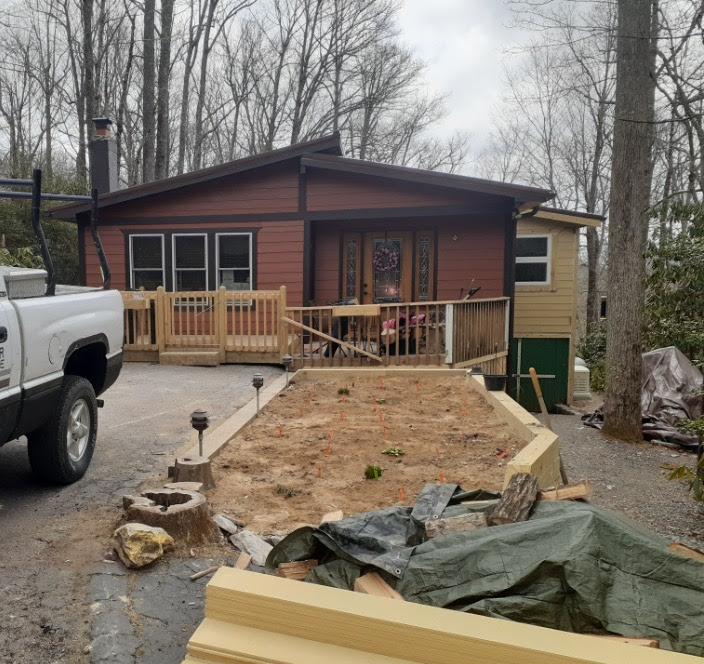
Julie Roberts
So, I relied on our longtime friend Jeff Smith, a horticulturist in Caldwell County, and my own learning gleaned primarily from native plant websites. I quickly discovered that the plants recommended on the formal landscape garden plan that Jeff Smith designed for us were simply not available during the early supply chain problems of the Covid-19 pandemic. I started learning everything I could, especially growing and planting requirements and started over based on the Carolina Native Nursery in Burnsville wholesale plant availability report. There were a few crop failures so about 5% of the plants were replaced during the growing season. I also have new trays of indoor and outdoor plants from seed and share with friends and neighbors.
We had lots of English Ivy and other invasive vines to deal with. I like to remove English Ivy as a slow but steady schedule of pulling it up with my hands or hands of others. Every few weeks or sooner I used a trowel to help get more roots out. Every few months of the growing season, I continue to dig, expose, and remove roots when they are dormant. A warm winter in 2021 has made that a lot easier. By spring, I will have a few smaller Ivy plants coming up again and expect we’ll dig out even more.
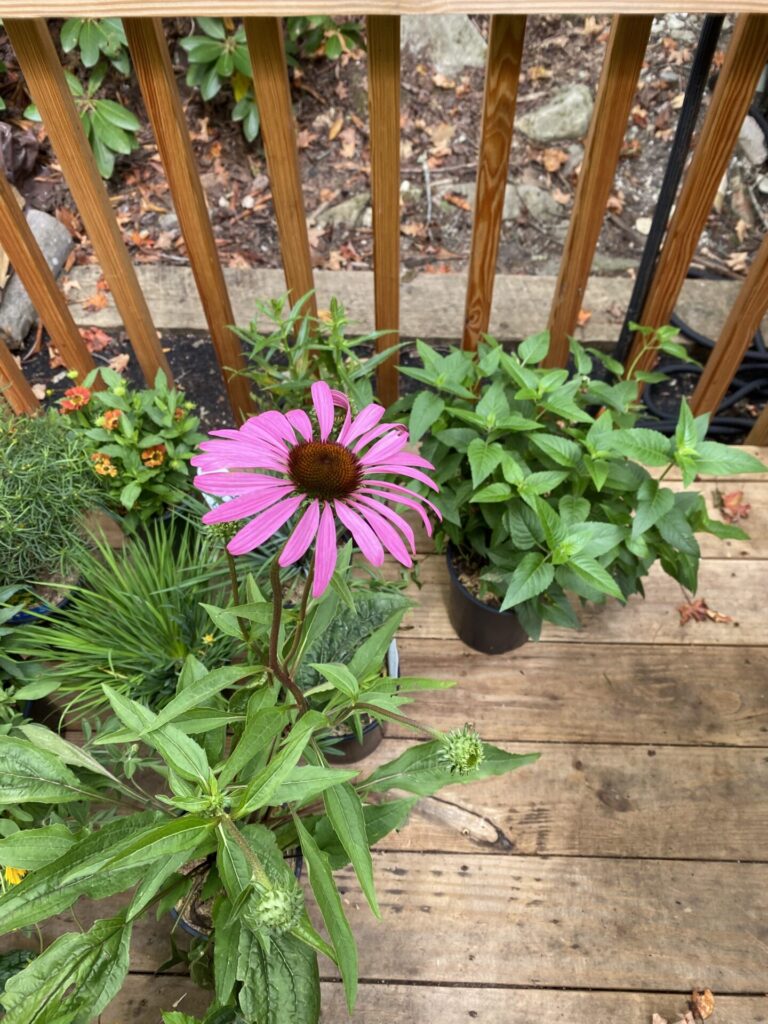
Julie Roberts
We amended the soil with lime, top-quality top mulch, ashes from the wood stove, and every so often coffee grinds. We decided to keep all leaves in the garden and cover the back slope with remaining levels of leaves. We even took three garbage bags of leaves from a nearby house to supplement our supply. The key for us, as we are both disabled, is to make each of these processes take seven days for what it might normally take someone who is not disabled. In some parts of the garden, we resorted to layering cardboard to kill areas with impenetrable weeds.
We found a few gems on the property, a beautiful elderberry plant and an old prolific heirloom apple tree that provided 40 apples in our first weeks here and will continue to need much tender loving care and future apples in the future.
This year, we plan to add additional native flowers (currently under grow lights) to every nook and cranny of our small one-tenth acre of the property bounded by roads on both sides and part-time owners on both sides. I have begun planting various groups of wildflowers in the border between our property and theirs. We will put more plants in the 12- by 12-foot front garden, and also around several trees, and want to choose unusual plants for some areas. One of my plans is I would like to plant in areas around the raised front bed with additional groupings of plants in various corners and introduce these ideas to my neighbors through these demonstration gardens.
I hope this article will provide encouragement to another short or long-term newbie as an example of how to turn a garden space into a home.
Click here to see Julie’s Top Ten Native Plants for the Mountains. Click here to see her complete Native Plants List.
By Julie Roberts
Native Plant News – Spring 2022
Julie Roberts, a technical marketing manager for 25 years, retired in 2004 at age 42 for medical reasons. She then became an online professor teaching business and technical college classes part time for 14 years, and currently holds 2 part time volunteer positions to help people with rare diseases access medical care. She says she is “always learning all the time about the realities and joys of connecting with the landscape and helping rebuild the environment and making these tasks more accessible to me as my health declines.”
